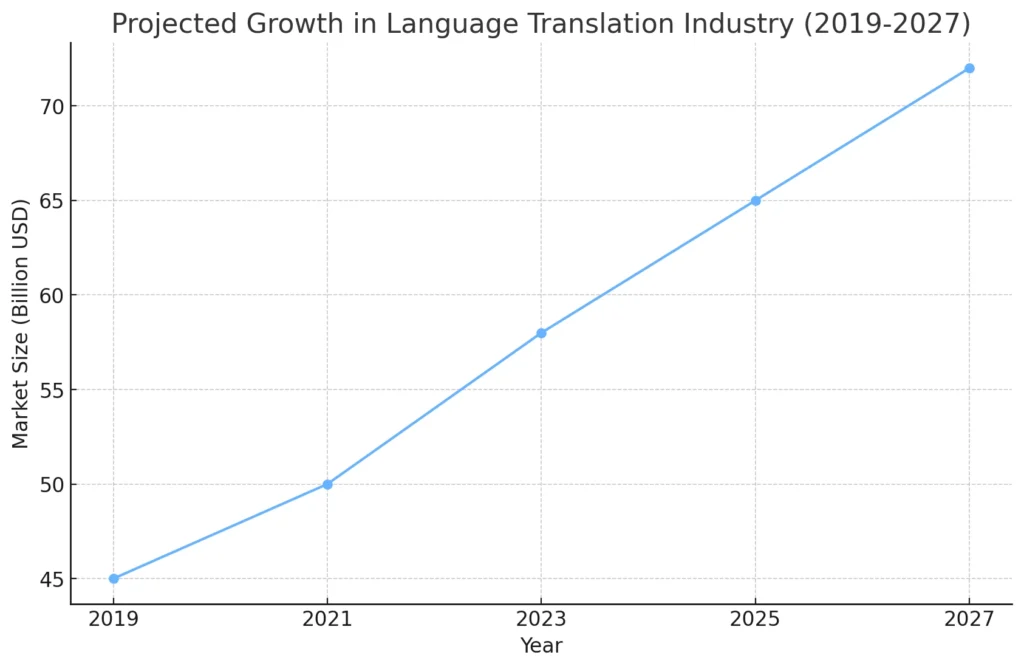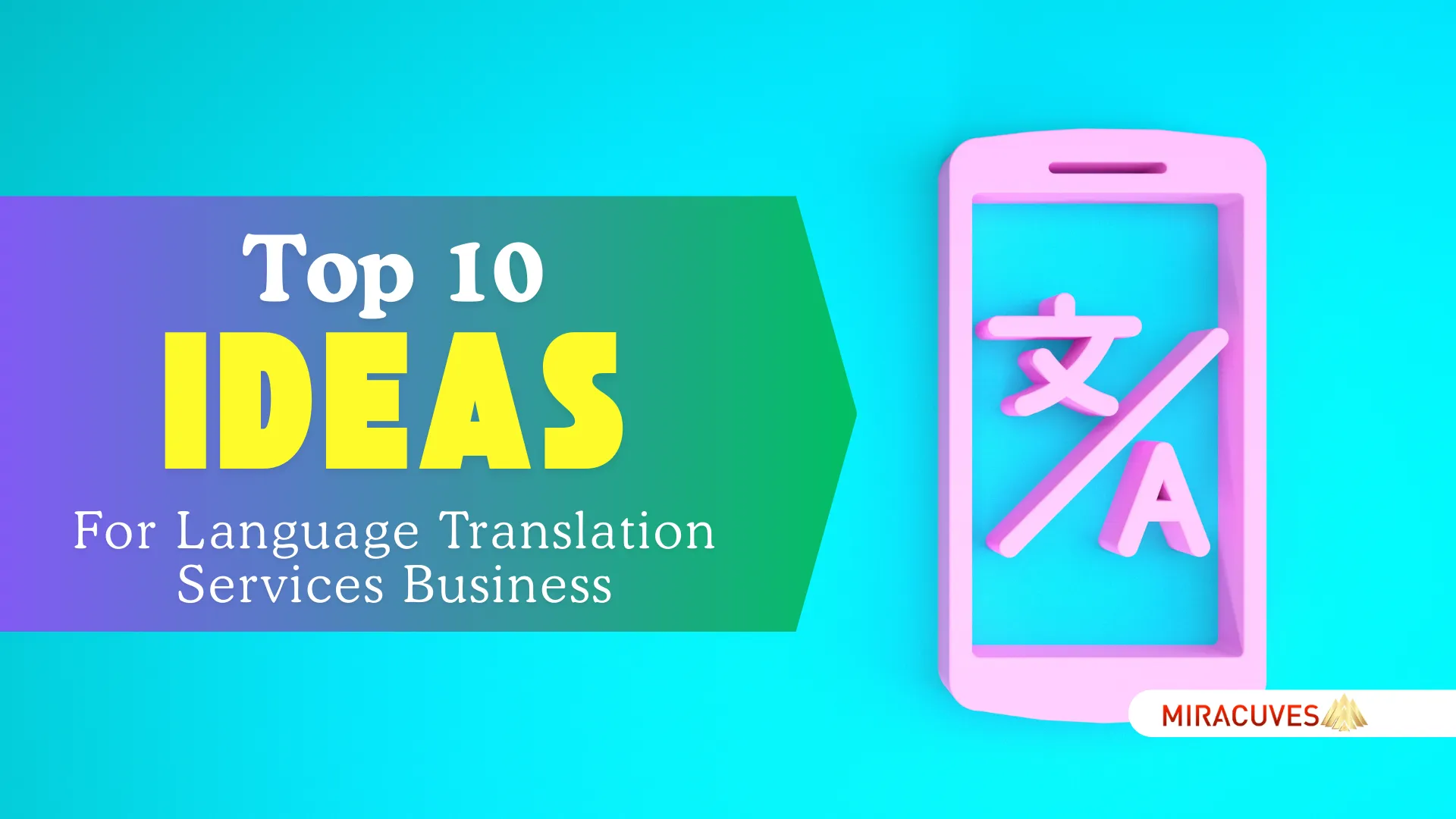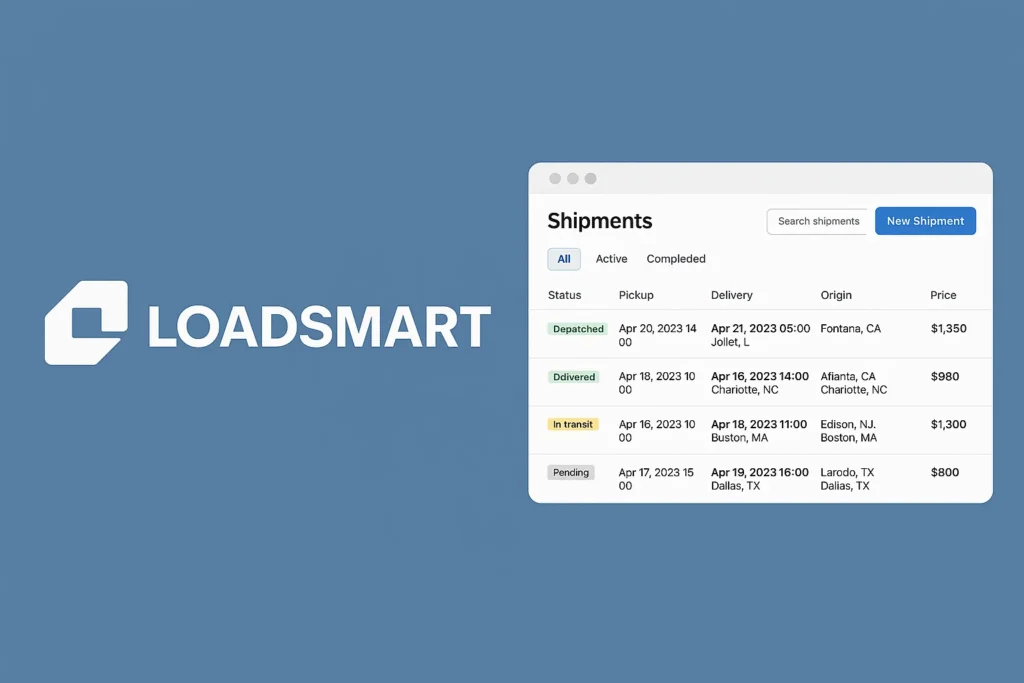In today’s interconnected world, the need for seamless communication across languages has never been greater. With businesses expanding globally and cultures blending more than ever, the demand for high-quality language translation services is on the rise. Whether it’s companies localizing their websites, people learning new languages, or professionals needing real-time interpretation, translation businesses are vital to bridging language barriers.
The language services industry is evolving rapidly, driven by digital globalization and innovative technology. From AI-powered translation tools to voice-to-text applications, there are numerous ways to build a thriving business in this field. Entrepreneurs now have access to a wide range of business models to explore—each tailored to meet the specific needs of industries like healthcare, tourism, and education. This article presents the top 10 startup ideas for those looking to make their mark in the translation services sector.
Why Choose Language Translation Services Business?
The demand for translation services is soaring as companies and individuals increasingly operate across different regions and cultures. Globalization has made communication between diverse linguistic communities essential, creating new opportunities for language service providers. Whether it’s translating business documents, websites, or marketing content, the ability to offer seamless multilingual communication provides immense value.
In addition to globalization, digital transformation has accelerated the need for translation services. Businesses with a digital presence now require localization to tailor their content for regional markets. This not only helps companies expand globally but also builds deeper trust with local customers. Furthermore, AI-powered tools and automated workflows are making it easier for translation businesses to handle large projects efficiently.
The growing popularity of voice and video translation tools also signals a promising future for startups in this space. These technologies cater to the rising demand for real-time communication, especially in industries such as healthcare, tourism, and education. Entrepreneurs who embrace these trends and offer specialized services will be well-positioned to capture market share in the evolving translation industry.
Investing in localization services helps businesses tailor their content to fit regional cultures and languages. This approach goes beyond simple translation, ensuring products, websites, and marketing materials resonate with local audiences. Startups that specialize in localization gain an edge by helping companies build stronger relationships with their customers.

Current Trends and Future Opportunities in Translation Services
The translation services industry is thriving, driven by several key trends that are reshaping how businesses and individuals communicate across languages. One of the most significant developments is the rise of AI-powered translation tools. These tools automate large parts of the translation process, allowing businesses to handle high-volume projects efficiently. Startups that integrate AI technology with human expertise can offer faster services while maintaining high-quality translations.
Another trend is the growing demand for localization services. Companies are now focusing on adapting their products, websites, and marketing content to fit the cultural context of specific regions. Localization goes beyond simple translation by capturing cultural nuances, ensuring that content resonates with local audiences.
Voice translation technology is also becoming popular, with applications in tourism, healthcare, and education. Real-time voice translation allows smooth communication between people speaking different languages, creating opportunities for businesses offering interpretation services. This trend is particularly relevant as international travel and virtual meetings continue to grow.
Looking ahead, machine translation post-editing (MTPE) is emerging as a valuable service. MTPE combines the speed of machine translation with the precision of human editors, making it an effective solution for industries like legal and medical services that require flawless accuracy.
The rise of AI-powered translation tools is transforming the industry by providing faster and more efficient translations without compromising quality. Platforms that combine automation with human editing ensure businesses meet tight deadlines while maintaining accuracy. Startups embracing these technologies are well-positioned to capture market share by offering high-speed translation services.
Read more: – Top 10 Unique Ideas for Yoga and Meditation Class Business Startups
| Trend / Technology | Impact on Business | Opportunities for Startups |
|---|---|---|
| AI-Powered Translation Tools | Speeds up translation processes | Offer faster and scalable services |
| Localization Services | Builds cultural relevance | Develop region-specific translation models |
| Voice Translation Technology | Enhances real-time communication | Target tourism, healthcare, and education |
| Machine Translation Post-Editing | Improves translation accuracy | Focus on legal, medical, and technical fields |
Top 10 Ideas for Language Translation Services Business Startups
| Business Idea | Startup Cost Range | Target Market | Profit Potential |
|---|---|---|---|
| AI-Powered Translation Service | High | Businesses | High |
| Voice Translation App | Medium to High | Travelers, healthcare professionals | High |
| Legal and Medical Translation | Medium | Law firms, healthcare providers | Very High |
| Localization for E-commerce | Medium | E-commerce companies | High |
| Multilingual Customer Support | Medium | Global businesses | Moderate to High |
| Video and Subtitle Translation | Low to Medium | Content creators and educators | Moderate |
| Translation Platform for Freelancers | High | Freelancers and businesses | High |
| Multilingual SEO Services | Medium | International companies | High |
| Language Coaching Service | Low to Medium | Students and professionals | Moderate |
| Document Translation Service | Low | Corporate clients and individuals | Moderate to High |
1. AI-Powered Translation Service
Develop a translation service that leverages artificial intelligence to automate translations. Combining machine translation with human editing ensures high accuracy for business clients.
- Target Market: Businesses needing fast, scalable translation services
- Estimated Costs: High (AI tools, platform development)
2. Voice Translation App
Create an app that offers real-time voice translation, enabling travelers, medical professionals, and tourists to communicate seamlessly in different languages.
- Target Market: Travelers, healthcare professionals, and tourists
- Estimated Costs: Medium to High (App development, voice recognition tools)
3. Legal and Medical Translation Services
Specialize in translating legal documents and medical records, providing precise, industry-specific language services.
- Target Market: Law firms, healthcare providers
- Estimated Costs: Medium (Specialized translators, compliance tools)
4. Localization Service for E-commerce
Offer localization services to help e-commerce companies adapt their websites, product descriptions, and marketing content for regional markets.
- Target Market: E-commerce companies expanding internationally
- Estimated Costs: Medium (Content management systems and translators)
5. Multilingual Customer Support Service
Build a service that provides customer support in multiple languages to help companies engage with their diverse customer base.
- Target Market: Global businesses needing 24/7 multilingual support
- Estimated Costs: Medium (Call centers or chatbot platforms)
6. Video and Subtitle Translation Services
Offer translation services focused on video content and subtitles for online courses, YouTube videos, and films.
- Target Market: Video producers, content creators, and educators
- Estimated Costs: Low to Medium (Editing tools, translators)
7. Translation Platform for Freelancers
Develop a marketplace where freelance translators can offer their services, and businesses can find translators suited to their needs.
- Target Market: Freelancers and businesses needing on-demand services
- Estimated Costs: High (Platform development and marketing)
8. Multilingual SEO Services
Specialize in optimizing websites for multiple languages, helping businesses rank better in regional search engines.
- Target Market: International companies and websites
- Estimated Costs: Medium (SEO tools and translators)
9. Language Coaching Service
Provide one-on-one or group coaching in multiple languages through online sessions, helping students and professionals improve language skills.
- Target Market: Students, professionals, and language enthusiasts
- Estimated Costs: Low to Medium (Online platforms and tutors)
10. Document Translation Service
Focus on translating business, academic, or technical documents for individuals and corporations, ensuring accuracy and fast delivery.
- Target Market: Corporate clients and students
- Estimated Costs: Low (Freelance translators and digital tools)
Real-World Examples
Several businesses have carved a niche in the language translation industry by embracing technology and understanding the evolving needs of their clients. One standout example is AI-powered translation platforms that offer fast, scalable solutions for enterprises. These platforms combine machine translation with human post-editing, ensuring speed and precision, and have become a preferred choice for businesses working with large volumes of content.
Localization services for e-commerce platforms are another success story. Startups that specialize in adapting product descriptions and marketing campaigns for regional markets have gained traction by helping online stores build customer trust and increase global sales.
In the tourism and travel sector, voice translation apps have emerged as game-changers. These apps allow real-time conversations in different languages, making travel easier and more accessible. Similarly, healthcare providers have started relying on voice translation tools for smooth communication with patients, highlighting the versatility of these solutions.
Freelancer translation platforms have also made a mark by connecting skilled translators with businesses in need of specialized services. These platforms provide opportunities for independent translators to build portfolios and offer businesses the flexibility to find the right talent for specific projects.
| Business Model | Success Rate (%) | Common Challenges |
|---|---|---|
| AI-Powered Translation Platforms | 85% | Balancing automation with human quality |
| Localization Services for E-commerce | 80% | Managing cultural nuances effectively |
| Voice Translation Apps | 75% | Ensuring real-time accuracy |
| Freelancer Translation Platforms | 70% | Maintaining quality across projects |
Mistakes to Avoid When Starting a Language Translation Business
Launching a language translation business offers great potential, but it’s easy to stumble if certain pitfalls aren’t avoided. Entrepreneurs who identify these common mistakes early can build stronger, more sustainable operations.
1. Over-reliance on Automation
While AI-powered tools are valuable, relying solely on machine translation without human oversight can compromise quality. Automated translations may miss cultural nuances and context, leading to miscommunication. Balancing technology with skilled human translators ensures accurate and high-quality results.
2. Ignoring Market Niches
Trying to cover all translation needs at once can stretch resources thin. Many successful startups focus on specific industries, such as legal or medical translation, to build expertise and attract loyal clients. Identifying and mastering a niche market can significantly improve business growth.
3. Poor Project Management
Managing translation projects without efficient workflows can lead to delays, inconsistent quality, and dissatisfied clients. Tools for project management and communication are essential for organizing tasks, tracking deadlines, and maintaining quality throughout each project.
4. Neglecting Client Communication
Some businesses fail to keep clients informed throughout the translation process. Clear and regular communication builds trust and ensures client expectations are met. A lack of communication may result in dissatisfaction and lost business.
5. Weak Marketing Strategy
Many startups rely solely on word-of-mouth marketing, missing opportunities to expand. Building a strong online presence, engaging in multilingual SEO, and using targeted ads can attract more clients and position your business for long-term success.
| Common Mistake | Impact | Preventive Strategy |
|---|---|---|
| Over-reliance on Automation | Loss of translation quality | Combine AI tools with human oversight |
| Ignoring Market Niches | Slow business growth | Focus on specialized translation services |
| Poor Project Management | Missed deadlines and client complaints | Use project management tools |
| Neglecting Client Communication | Client dissatisfaction and lost business | Maintain regular updates with clients |
| Weak Marketing Strategy | Limited customer reach | Build a strong online presence and run ads |
Read more: – Top 10 Unique Ideas for Yoga and Meditation Class Business Startups
Why Trust Miracuves Solutions for Your Next Project?
Building a thriving language translation business requires more than just great ideas—it needs a reliable technology partner. Miracuves Solutions specializes in developing smart, scalable platforms tailored for translation services. With their expertise in automation, AI integration, and project management tools, Miracuves empowers businesses to deliver high-quality translation services efficiently.
1. Expertise in Building AI-Powered Platforms
Miracuves Solutions has a deep understanding of how to integrate AI with human translation workflows. Their platforms enable businesses to combine speed with precision, meeting the growing demand for fast and accurate translations.
2. Fast and Affordable Development
In the fast-moving translation industry, time is critical. Miracuves ensures that your business is up and running 30 times faster than the average development cycle while keeping costs 10% of global rates. This gives startups a competitive edge, allowing them to enter the market swiftly and efficiently.
3. Scalable Solutions for Growing Businesses
As your business grows, you need technology that can grow with you. Miracuves Solutions provides scalable platforms that adapt to increased demand, supporting seamless expansion into new markets without downtime or disruptions.
4. Continuous Support and Updates
With Miracuves Solutions, you get more than just a one-time setup. Their team offers continuous support, ensuring your platform stays updated with the latest technologies and features. This proactive approach helps businesses stay ahead in the dynamic translation industry.

Conclusion
The language translation business is filled with opportunities, thanks to the growing need for seamless communication in a globalized world. Whether it’s AI-powered platforms, voice translation apps, or specialized services like localization, the industry offers a wealth of possibilities for innovative entrepreneurs. Success in this space requires a blend of technology, precision, and customer-centric strategies.
Starting small with a niche focus and gradually scaling with advanced tools like machine translation and AI can set your business on the right path. With strategic planning, efficient project management, and a strong marketing approach, you can build a sustainable translation business that meets market demands and stays competitive.
The future of translation services is bright, with new technologies and market trends shaping how businesses connect across languages. This is the perfect time to dive in, leverage innovative ideas, and make your mark in the industry with Miracuves solutions.
FAQs
How much does it cost to start a language translation business?
The startup cost varies based on the business model. A small freelance operation may cost less than $1,000, while larger platforms or AI-powered services may require a higher investment for technology and infrastructure.
What technology is essential for a translation business?
Essential tools include translation management software (TMS), machine translation engines, and project management platforms. AI and voice recognition tools can further enhance your service offerings.
How can I find clients for my translation business?
Building a strong online presence, using multilingual SEO, and joining freelancer platforms are effective ways to attract clients. Networking with businesses that operate internationally can also open new opportunities.
How do I ensure high-quality translations?
Combining human expertise with technology is key. Use skilled translators for specialized tasks, along with machine translation tools for efficiency. Implementing quality checks and client feedback loops ensures consistency.
What are the biggest challenges in the translation industry?
Common challenges include managing deadlines, maintaining translation accuracy, and keeping up with technological advancements. Strong project management and continuous learning can help overcome these hurdles.
Related Article:
- How to Build an App Like FedEx – A Developer’s Guide from Scratch
- Top 10 Ideas for Starting an Online Cooking Classes Business
- Top 10 Ideas for Business Mentorship Programs Business Startups
- Top 10 Ideas for Online Therapy and Wellness Coaching Business Startups
- Most Profitable Video Calling Apps to Launch in 2025








